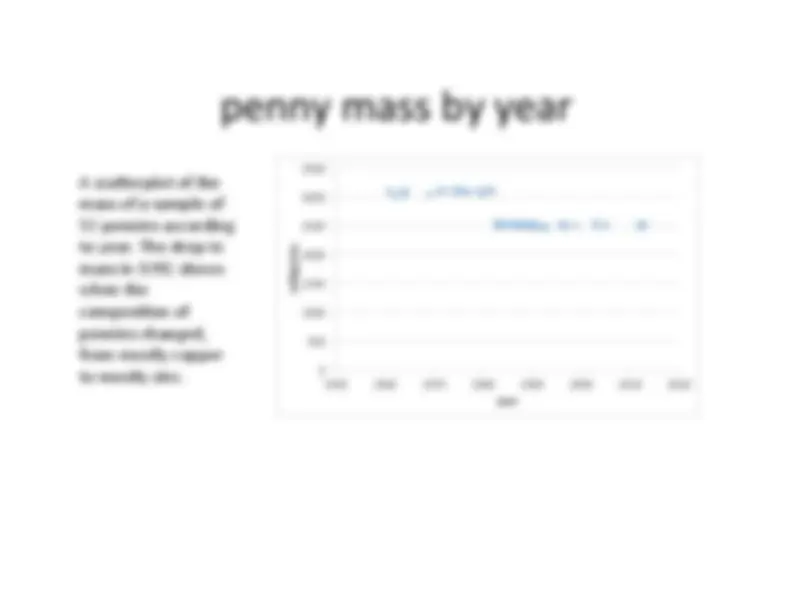



Study with the several resources on Docsity

Earn points by helping other students or get them with a premium plan


Prepare for your exams
Study with the several resources on Docsity

Earn points to download
Earn points by helping other students or get them with a premium plan
Community
Ask the community for help and clear up your study doubts
Discover the best universities in your country according to Docsity users
Free resources
Download our free guides on studying techniques, anxiety management strategies, and thesis advice from Docsity tutors
Histogram and scatterplot data on the thickness and mass of a sample of pennies. The thickness histogram shows an average thickness of 1.42mm with an rms deviation of 0.07mm, while the thickness of a new penny is designed to be 1.52mm. The mass histogram reveals two distinct peaks, indicating pennies made before 1982, primarily of copper with masses around 3.1g, and those made after 1982, primarily of zinc with masses around 2.5g. A scatterplot of thickness versus mass also shows a correlation between the two variables.
What you will learn
Typology: Summaries
1 / 3

This page cannot be seen from the preview
Don't miss anything!


A histogram of the measured thickness of 100 new pennies (which haven't been worn appreciably and should all be the same thickness) using a crude micrometer. The average thickness for this sample is 1.42mm and the RMS of the distribuEon is 0.07mm. The thickness of a new penny is designed to be 1.52mm, considerably thicker than the average of the sample above. The shiI in the distribuEons suggests some kind of systemaEc error in the measurement. In this case, the two faces of the micrometer are not exactly parallel; on one side the micrometer, where we made all the measurements, it measures a liMle too low.
A histogram of the masses of a sample of 50 pennies measured using a jeweler’s scale. The two peaks in the distribuEon show pennies